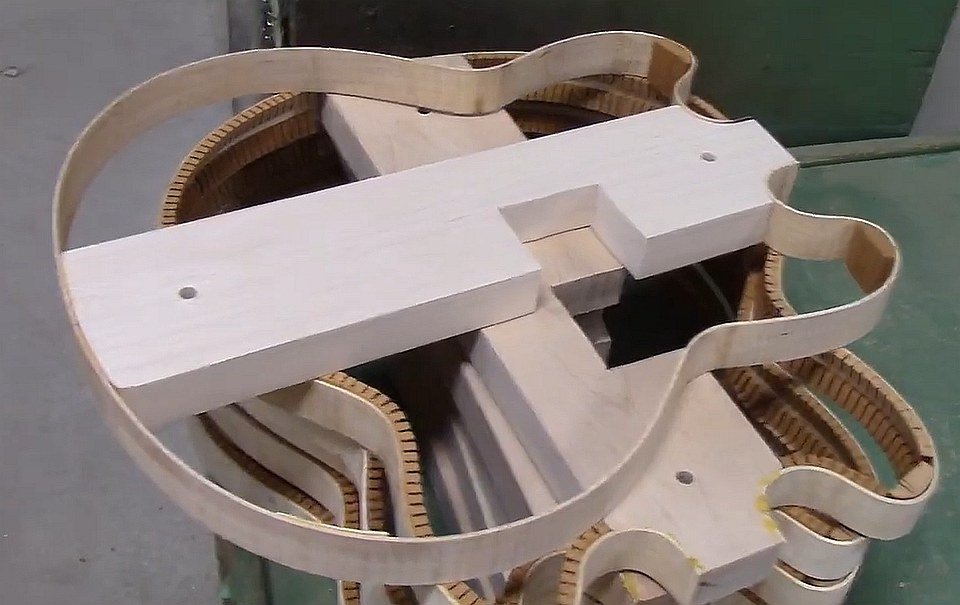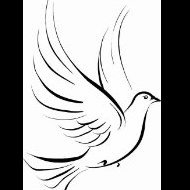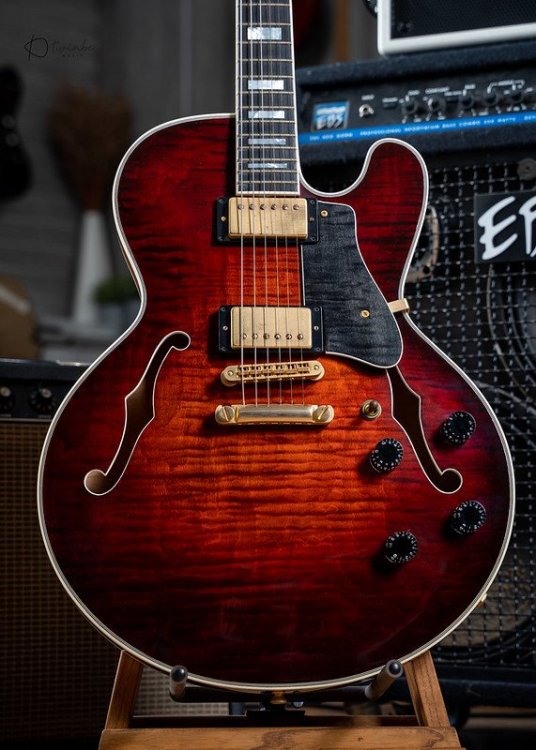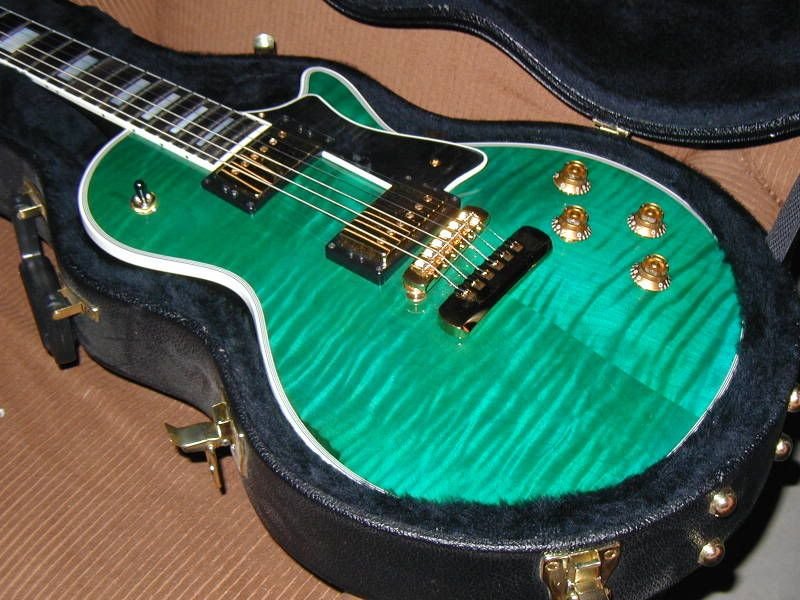All Activity
- Past hour
-
I transplanted the Wolfetones into my 535 from my H150, then bought another set of Wolfe's for the H150 🤣 I can't remember what was originally in the 535, maybe Duncan 59's?
- Today
-
Does this mean Guy has it or has found it? Congrats!
-
What are the Vegas odds on me finding this guitar?
-
Saw him play in ‘78. Until that point I had no idea there were only 3 dudes making all that sound! Good times…
-
Yeah, I'm a big fan. I have a USA Geddy Lee signature model. I really love it too! And a Rick 4003. Black, of course. (couldn't live with the old Rick bridge - neither did Geddy, as he put a BaddAss bridge on it.
- Yesterday
-
Here's an old video of them building a semihollow. It appears that the main block is maple. You would want a strong wood, since you need to put your neck joint in there, just like a solid body. Its definitely not mahogany, it's way too light colored. You can see the color difference of the mahogany kerfing below. From what I have read, an ES335 will have a maple block and the filler piece is spruce which is kerfed to bend more easily. If you listen closely, I think that he says they use a basswood insert for the filler section that goes between the top and the block. It's about 3:30 into the video. He also explains about doing floating blocks (top is fixed, back is not).
-
Hard to answer. I've ordered solid blocks on floating block guitars and floating blocks on solid block guitars in the past. The good old days. Glad I was involved in the Golden Years with Custom Shop Service.
-
The Roy Clark early on had a floating center block. But you know Heritage back then. Flexible.
-
The center block may be cedar. At least the Asian Epiphones use that wood.
-
That's a good question. I always assumed the Roy Clark was a single cut version of a 555., particularly when I see a full stop-bar tailpiece. Having never seen one other than the prototype, let alone play one, its hard to say what its made out of. For some reason, I'm thinking its a block of maple.
- Last week
-
I have no idea about the answer to your two questions, but I always love the questions you ask and the insights you provide. And that’s a beautiful Guitar by the way.
-
MartyGrass started following Center Blocks
-
I apologize if this has already been addressed 10 times. HOC is now old enough that it has a lot to search through, even when using the search feature. So here's the first point. The Roy Clark model is supposed to have a floating center block. Mine doesn't. It has a full one. I'm happy with it. I was a bit surprised though. Two questions: 1. What does Heritage use for center blocks and is that variable? 2. Does Gibson use the same wood for their 335-355? Thanks, fellow nerds.
-
and you and I are well set on the H-535 front! I bought a pair of the Legends' cousin, the Dr. Vintage, thinking I'd install them in a Gibson LP Studio. However, the LP sounds too goo to mess with so methinks the 59s in the new 535 will get 86'd and replaced with the Dr. Vs. I guess I've become a Wolfetone fanboi . . .
-
You left out that the young bass player played in his hero’s band the last time Anderson, Wakeman and Howe were together on stage. He did so, most notably, with a Fender bass… https://www.yout-ube.com/watch?v=8_hAhzdk-h8&list=RD8_hAhzdk-h8&start_radio=1
-
A very young bass player once bought a Rickenbacker bass, in the footsteps of his hero, Chris Squire. He was most disappointed to find that he didn't sound at all like Chris Squire. The young bass player eventually became quite famous on his own and associated closely with the Rickenbacker bass. Thing is changing parts will make little tweaks in the sound, but you might be chasing a ghost. We don't really know what instrument might have been played in a studio, even when a musician is strongly associated with a particular instrument. Sometimes, maybe there was just something random in the place and he picked it up and played it. Then there's the amp, and the micing and the room, and the engineer's technique to take the track, that particular session or maybe many sessions and so on and so forth. Find the guitar that works for you and your hands, and play the song(s) you want as well as possible. Then, record it. Compare overlayed on the track you want to sound like. See what you can do with various studio/DAW plugins, especially ones that represent the things that might have been in use at the time it was originally recorded. Then do some deducing what is and isn't close to your ghost. In many cases you can get "there" with some EQ, compression and creative dialing in of those.
-
I have Wolfetone Legends in my H-535
-
you got the blues for greeny
-
Quest is ovah, found the sound! Wolfetone Legends in 535 I bought used from Dave's. Neck pickup with tone rolled all the way down. A-B'd with the 535 (Duncan 59s) I purchased at PSP. Noticeable difference . . .
-
Nostalgia at its finest.
-
It’s green! 🤯
-
Smoking hot!
-
Beautiful guitar.
-
If you have please let me know This was the very first heritage guitar I ever bought, back around 1997?? Id like to get it back
-
yep & Mick is sitting in the hot seat.













